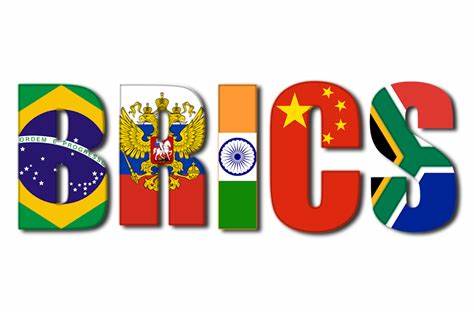BRICS Explained

By Reuters
Johannesbutg, Aug 21: The BRICS group of major emerging economies – Brazil, Russia, India, China and South Africa – will hold its 15th heads of state and government summit in Johannesburg between Aug. 22 and Aug. 24.
Here are some key facts about the bloc and its members.
WHAT IS BRICS?
The acronym BRIC, which did not initially include South Africa, was coined in 2001 by then Goldman Sachs chief economist Jim O’Neill in a research paper that underlined the growth potential of Brazil, Russia, India and China.
The bloc was founded as an informal club in 2009 to provide a platform for its members to challenge a world order dominated by the United States and its Western allies.
Its creation was initiated by Russia.
The group is not a formal multilateral organisation like the United Nations, World Bank or the Organisation of the Petroleum Exporting Countries (OPEC).
The heads of state and government of the member nations convene annually with each nation taking up a one-year rotating chairmanship of the group.
WHO ARE THE MEMBERS?
Brazil, Russia, India and China are the founding members.
South Africa, the smallest member in terms of economic clout and population, was the first beneficiary of an expansion of the bloc in 2010 when the grouping became known as BRICS.
Together the countries account for more than 40% of the world population and a quarter of the global economy.
Apart from geopolitics, the group’s focus includes economic cooperation and increasing multilateral trade and development.
The bloc operates by consensus. All the BRICS countries are part of the Group of 20 (G20) of major economies.
WHICH NATIONS WANT TO JOIN BRICS AND WHY?
Over 40 countries, including Iran, Saudi Arabia, United Arab Emirates, Argentina, Algeria, Bolivia, Indonesia, Egypt, Ethiopia, Cuba, Democratic Republic of Congo, Comoros, Gabon, and Kazakhstan have expressed interest in joining the forum, according to 2023 summit chair South Africa.
They view BRICS as an alternative to global bodies viewed as dominated by the traditional Western powers and hope membership will unlock benefits including development finance, and increased trade and investment.
Dissatisfaction with the global order among developing nations was exacerbated by the COVID-19 pandemic when life-saving vaccines were hoarded by the rich countries.
Iran, home to around a quarter of the Middle East’s oil reserves, has said it hopes the mechanism for new membership would be decided “at the earliest.”
Oil heavyweight Saudi Arabia was among more than a dozen countries that participated in “Friends of BRICS” talks in Cape Town in June. It has received backing from Russia and Brazil to join the BRICS.
Argentina said in July 2022 it had received China’s formal support in its bid to join the group.
Ethiopia, one of Africa’s fastest-growing economies, said in June it had asked to join the bloc, with a foreign ministry spokesman saying the country will continue to work with international institutions that can protect its interests.
Bolivia‘s President Luis Arce has expressed interest in BRICS membership and is expected to attend the summit. Its government said in July it was determined to curb dependence on the U.S. dollar for foreign trade, instead turning to the Chinese yuan, in line with BRICS leaders’ stated aim to reduce dependence on the U.S. currency.
Algeria said in July it has applied for BRICS membership and to become a shareholder in the New Development Bank, the so-called BRICS Bank. The North African nation is rich in oil and gas resources and is seeking to diversify its economy and strengthen partnership with China and other countries.